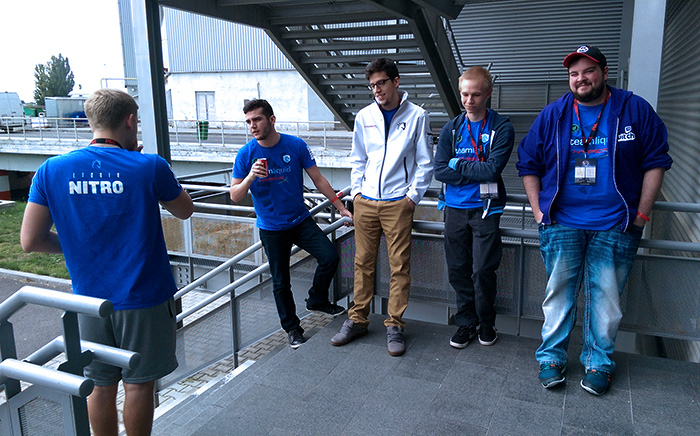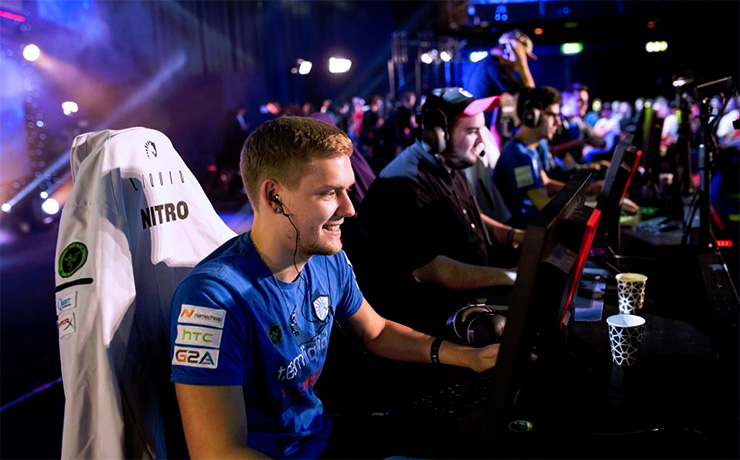Hiko on life before Liquid
October 23 2015
If there's one thing we did right, it was bringing on Spencer "Hiko" Martin to round out the team.
While there's still a lot of room to grow, the team has been tearing it up in North America, repeatedly destroying top NA teams and securing their status as one of the best in the region. There's still a matter of competing at the international level, but it starts with baby steps first. With Hiko coming in as the new addition to the squad, and all the success we've got since him joining, we wanted to know more about where he came from and how he got here.
OUT WITH THE OLD
In the beginning, there was Counterstrike 1.6. Hiko found tremendous success in his time with the game, but CS:GO had just launched and while everyone flocked to the newer, prettier game, the man was just not ready to let go.“At the very beginning of CS:GO when it first came out in the Beta I was holding on to 1.6 for awhile," he tells us. "James told me 1.6 was a dying game and CS:GO is the future. It took an 8 hour conversation for him to actually convince me, but he managed to do it."
And that conversation was worth it--it marked the beginning of Hiko's long journey. But for awhile, that journey wouldn't be without his friend James.
Hiko and James were teammates at the beginning of Global Offensive. “ I played on a team with James, DaZeD, moe, Pinekone and myself," Hiko recalls.
James and Hiko originally played on a team named “Area 51.” But James staying as a player would be short lived, and he'd depart from the roster to pursue schooling due to the inability to secure a sponsor. In turn, he'd replace himself and play a supporting role for the team. With James helping the roster from behind the scenes, the team still went on to place 3rd at ESWC 2012, an event that would set the pace for Martin for the next three years.
“Unfortunately, Area 51 eventually collapsed as an organization and James just went back to school. The rest of the team later signed with Complexity for a year, even with no salary but being the clear cut best team in the US, we stayed with coL for the year length of the contract." Hiko tells us.
"The day the contract expired I think only a couple weeks went by before we signed with C9.”
MAKING IT BIGGER
The brunt of Martin's competitive resume exist with the five man roster that was Cloud9. With top five placement across the board between FACEIT, ESEA, and CEVO the squad was no doubt one of the strongest teams in America. However after ESEA S17 there was a split and Martin decided to pursue other opportunities.
“I left C9 in November/December of last year and after that I ended up trying to form this super team for NA which was myself, swag, skadoodle, AZK and DaZeD which was said to be the strongest possible team the US could field."
Hiko continues, "I played with them for two weeks and we ended up qualifying for the X games. But Richard Lewis messaged me and told me to distance myself from this team because they were about to get banned and well, he was right."
Three of the five players on the team became banned which disqualified and prohibited them from Valve sponsored events. The announcement put an unfortunate roadblock in front of Hiko's career, one he wasn't sure he'd make it out of. But there were options.
“That was a pretty big blow," Hiko admits. "The only people on the team that weren't banned were myself and Skadoodle. We were going to continue and be a package deal. From then on, I'd start focusing on my stream and I landed an analyst job at Katowice."
But competitive CSGO would call to Hiko once more. "Elevate needed me and skadoodle to play for CEVO S6 LAN, which was the first LAN we went to together. That was what sparked the fire under us; to play for a team and we started looking around. We tried to take nitr0, AdreN, and Fugly over with us to be the second coming of the dream team.” Ultimately however skadoodle ended up signing with Cloud9 and Martin had to evaluate his alternatives.
“For me, the options were CLG, Liquid, and Nihilum," Hiko tells us. "Ultimately, I went with Nihilum."
And yet, there were a lot of troubles within the Nihilum line-up. "A lot of people accused me of coming into that team and killing it," Hiko shrugs. "But there were already problems and that team ended up being a big fail. Nihilum ended up losing their title sponsor Kinguin and couldn’t pay our salaries. The week before the ESL One Cologne 2015 Qualifier I just didn’t want to play, no one's heart was in it anymore.”
Fortunately, an old friend would come back to save Hiko from this period of darkness.

MOVING FORWARD
After being approached by James O'Connor, his former teammate and the unofficial Coach for Team Liquid CSGO at the time, after the qualifier, Hiko subbed for TL for three long weeks. It was evident Hiko was going to join the line-up. But their were a few things that had to be cleaned up first. “The biggest barrier before joining Liquid was the hurdle of getting the specifics worked out with my personal brand. The owners and myself were sitting down to work out how sponsorship was going to play into things. There was an article saying I asked for two and half times more than the other players but that's not true we were just trying to figure out the sponsorship side of things. “
While the short term goals of the team are to become the best team in North America, the obvious long term goal is to be number one in all areas. “We’ve proved to be a contender. I think without a doubt in anyone's mind we are top two in NA. In the long term, we want to be better than Cloud9 and be the top American representatives at international events. But for now, the biggest goal is to just win a big international tournament to begin with.“
To take on the giants of Europe, Martin knows that change will have to occur not just for his team, but in all of the American scene before any real progress can be made. “I think one of the biggest problems with NA right now are where we fall into this mindset that after every ESEA season most teams are 'hey, let's go through this roster change.' Then afterwards , very few American teams are willing to go through the growing pains that happens after you shuffle players around, and the cycle repeats itself."


"Teams need to be willing to grind through the good times and the bad times. With CLG, LG, and us really able to compete with C9 now, I think practice regimens in the US are very different than in EU. Europe bootcamps are like deathmatch at 4pm, at 6pm they might go over strats, and then for the next four to six hours they will straight practice the full 30 rounds of a map. The goal in the scrim is to not win the scrim, it's to work on their tactics. Most of these NA teams outside of C9, CLG, and LG try to play to win scrims, unfortunately that's not practice. Just because you’re winning scrims doesn’t mean you’re winning games. I also feel like NA CS:GO has room for strong minds and ingame leadership right now.”
-Hiko on NA
-Hiko on NA


Martin had first hand experience recently playing for CIS team Flipsid3 Tactics at ESWC this past year. “One of my friends that I’ve known for a long time is the manager on Flipsid3. I knew a couple of the players didn’t all speak english. I’ve played against Markeloff a few times and b1ad3. I was skeptical at first. They asked me on the Thursday before ESWC and I ended up flying there on Friday morning the day of the event. We had a three hour bootcamp before the LAN against Team Liquid ironically. They would call the strats in Russian first, then recall it in English for me. The team would speak Russian to each other, and then the coach would translate the information I needed to know. Inferno was rough, but our CT sides were on point. Things worked well. We ended up winning a best of three against NiP. It was a really good learning experience. I got first hand experience and first hand knowledge and into the mind of a EU team and playing under one of the best in-game leaders in the world b1ad3. Probably the best learning experience I ever had in CSGO.”
To put this experience into practice, Martin and the rest of the team have taken to a rigorous practice regimen. “Usually, we get on at 7 or 7:30pm. At that time, for the first few minutes to an hour, we’ll go into a server show each other some smokes.” In his own personal realm, Martin streams between four to six hours a day, shows up to practice early for some deathmatch before moving onto demos and the meat of practice with the team. “I personally am playing something approximate to twelve hours a day right now.”
Admittedly the team has some areas to work on. “If we would have asked me three days ago, my answer would have been different right now. The way we practice is really good, I think our CT sides could use a little work. A lot of people are trying to make individual plays and don't get me wrong if they make those plays we are going to win but I think working together more on CT sides. On T-sides some of our roles on different maps are a little bit weird. I think we need to have FugLy be the main lurker on the team and me as the secondary passive player. On some maps we’re going to the wrong spots. Moving forward we just need to focus on things like that.”
Make sure you catch Hiko and the team at Dreamhack Cluj-Napoca, their first major as a new unit. They'll be fighting some formidable opponents, but they're as ready as can be!
Related Articles:
Dylan is the Lead CS:GO and Heroes of the Storm writer for @TeamLiquidPro. Outside of that, he's the professional scrim scheduler and gaming house mom for @Cognitivegg. Achievements include Rank 1 on Skype and aspirations involve growing esprouts in his own garden. You can fund or otherwise follow his progress @COG_Dylux.